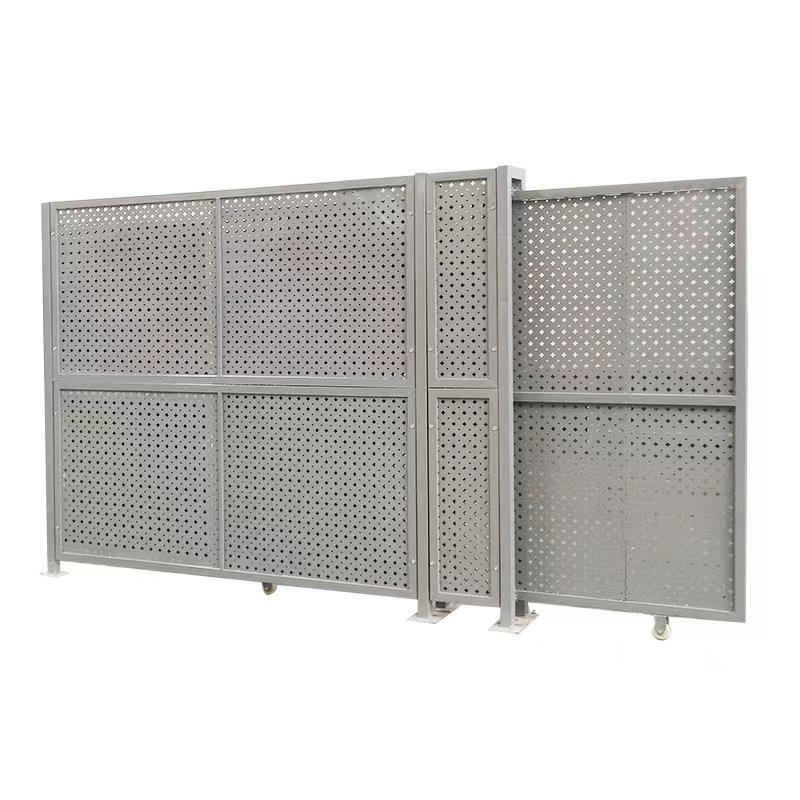The Cost of Temporary Construction Fencing A Comprehensive Overview
Temporary construction fencing plays a crucial role in ensuring safety, security, and delineation of construction sites. It serves as a barrier that protects the public from potential hazards associated with construction activities while also safeguarding equipment, materials, and the site itself from theft or vandalism. Understanding the costs associated with temporary construction fencing is essential for project managers, builders, and contractors.
Factors Influencing the Cost
1. Type of Fencing The cost of temporary fencing can vary significantly based on the type of material used. Chain link and solid panels are among the most common choices. Chain link fencing is typically more affordable but may not provide complete privacy. Solid panels can be more expensive but offer added security and noise reduction.
2. Length of Fencing Needed The size of the construction site dictates the length of fencing required. Larger sites naturally incur higher costs due to the need for more materials and installation labor. Many fencing companies charge by the linear foot, so careful planning can help minimize excess costs.
3. Height and Design The height of the fencing can also affect costs. Standard temporary fencing usually stands six feet tall, but taller fencing may be necessary for certain projects, especially those involving hazardous materials. Additionally, custom designs or colors can lead to increased expenses.
4. Installation and Labor Costs The cost of installation is an important component of overall fencing expenses. Some companies include installation in their rental fees, while others charge separately. Labor rates can vary by region, influencing the final cost based on local economic conditions.
5. Duration of Rental Temporary fencing is often rented rather than purchased outright. Rental costs will depend on how long the fencing is needed for the construction project. Long-term rentals may lead to discounts, while short-term projects may incur higher daily rates.
cost of temporary construction fencing

6. Location Geographic location significantly influences the cost of temporary construction fencing. Urban areas with high demand for construction and limited availability of space may see higher prices compared to rural areas. Moreover, local regulations and permitting requirements can add to expenses.
Cost Estimates
As a rough estimate, typical rental costs for temporary construction fencing range from $1.50 to $3.00 per linear foot per month. However, this price can fluctuate based on the factors mentioned above. For example, a 100-linear-foot section of chain link fencing might cost between $150 to $300 for a month-long rental. Solid panel fencing will generally be more expensive, potentially ranging from $2.00 to $5.00 per linear foot.
Additional Considerations
When budgeting for temporary construction fencing, it’s important to factor in potential additional costs related to permits, maintenance, and any necessary modifications during the project. Furthermore, many construction projects require insurance for liability; understanding whether the temporary fence provider includes coverage or if separate policies are needed is crucial.
Conclusion
In summary, the cost of temporary construction fencing can vary widely based on numerous factors, including material, size, installation, and location. By carefully assessing the specific needs of the construction site and engaging with reputable fencing vendors, project managers can effectively budget and secure the necessary fencing to maintain safety and compliance on the job site. Proper planning and understanding of costs will lead to a successful and secure construction endeavor.
-
Why Galvanized Trench Cover Steel Grating Resists Corrosion
NewsJul.10,2025
-
The Versatility and Strength of Stainless Expanded Metal Mesh
NewsJul.10,2025
-
Load Calculations in Steel Grating Platforms
NewsJul.10,2025
-
Keeping Pets and Kids Safe with Chicken Wire Deck Railing
NewsJul.10,2025
-
Hole Diameter and Pitch for Round Perforated Metal Sheets
NewsJul.10,2025
-
Aluminium Diamond Mesh in Modern Architecture
NewsJul.10,2025
Subscribe now!
Stay up to date with the latest on Fry Steeland industry news.

